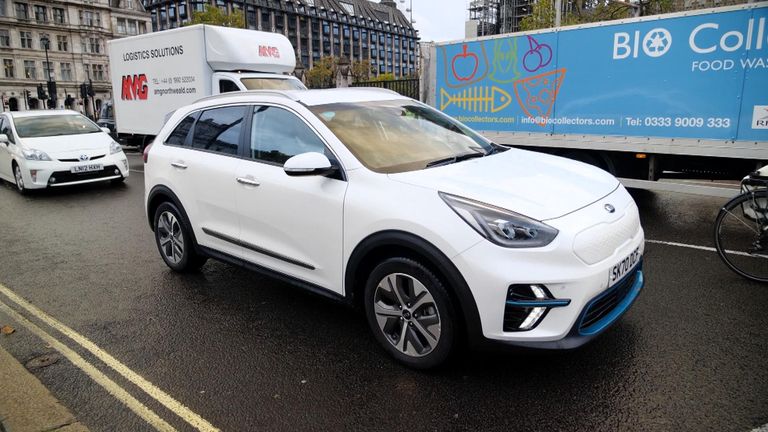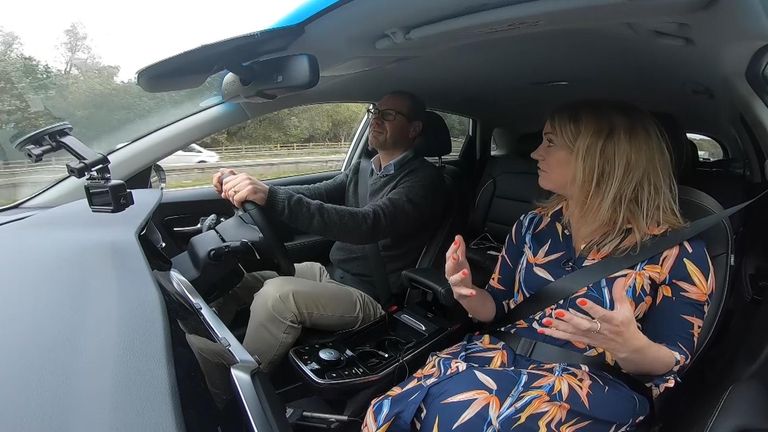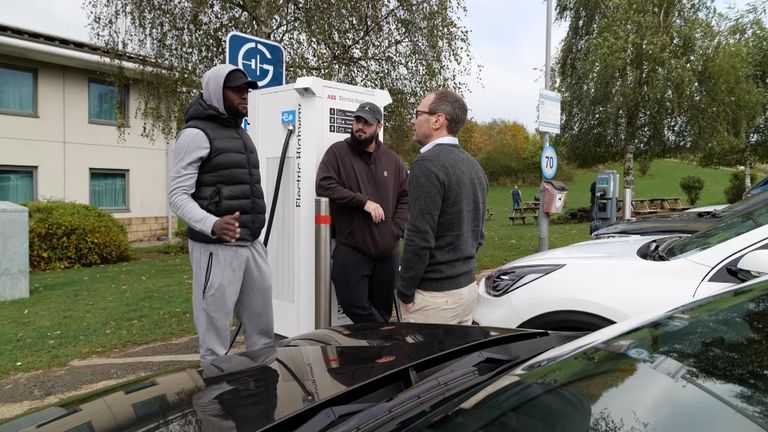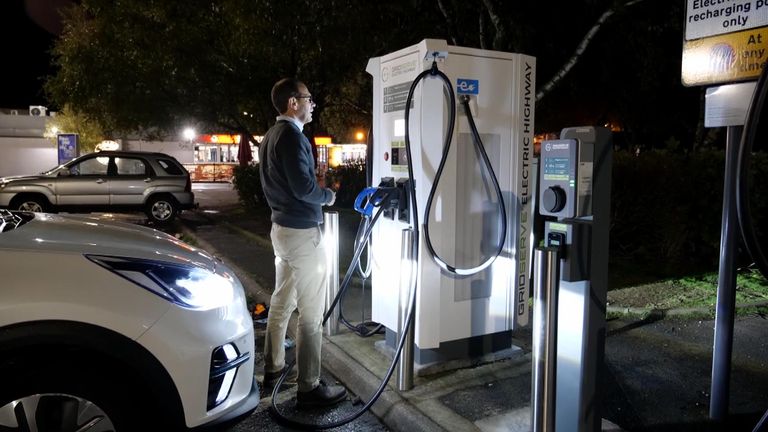
It was at my first charging stop that I realised driving an electric car from London to Glasgow might not be as straightforward as I had thought.
It wasn’t just the broken charger. Nor the queue for the ones that worked. But it was the warning by more seasoned electric drivers that this wasn’t unusual.
I had started in Westminster feeling upbeat about my challenge.
I was driving a Kia e-Niro, a family SUV with a range of about 275 miles. With the map telling me it was 400 miles to the COP26 climate summit in Glasgow city centre, I reckoned two charges should see me through.
Sales of electric cars are accelerating – one in 10 new cars so far this year has been powered by a battery.
Many will have bought an electric because of the climate credentials.
Cars account for the equivalent of 68 million tonnes of carbon dioxide every year in the UK, around 13% of the country’s total emissions.
So switching away from fossil fuel cars is a critical step towards net-zero.
Whatever the reason for buying an electric car, they are great to drive. Quiet too.
So the journey to my first charging stop at Norton Crane Services on the M6 Toll was a breeze.
That’s where reality hit home. Only three of the four rapid charging points were working – nowhere near enough for the number of electric vehicles wanting a top-up.
Some people gave up, but I stuck it out. Even when I got to the front of the queue it took several attempts for the car and charger to talk to each other and for the electrons to flow.
Sorosh told me to get used to it.
He’d had an electric car for three months and rated his experience 50:50. He loved his car, but not the charging infrastructure.
“There is a lot of work to if they are scrapping all diesel cars by 2030. It’s nowhere near ready,” he said.
“They have got two charging spots here when you need at least 10.”
Dion agreed. “It’s the future,” he said. “It’s better for the environment. But with all this stress and headache I might as well go and buy a petrol or diesel car because then I know there is going to be fuel at the petrol station.”
For part of my journey, I was joined by Philippa Oldham, a director and engineer at the Advanced Propulsion Centre UK.
She said cars have become a serious proposition for motorists, with many now capable of well over 200 miles, roughly three times the range of the best-selling electric just eight years ago.
Charging times are falling too as battery technology develops to take higher power.
But my car could still take almost an hour to charge up – far longer than I would normally spend at a service station.
“It is a long time,” Philippa agreed. “But is that the time for a lunch stop, to make a few phone calls and check emails?
“It’s behaviour change, but there are also technology changes coming. There is an organisation called Sprint Power looking at whether you can charge a battery in 12 minutes, which is exactly the time you need to stop at a service station, go to the toilet, get a coffee and you are good to go.
“Within five years we will see that technology in vehicles.”
But the extra up-front cost of buying electric is still a major deterrent to many people.
“It is still often the second car and many people can’t afford two cars so there is a big challenge in bringing the cost down and making it accessible to everybody.
“We need growth in the second-hand vehicle market and that is starting to happen.”
My next charging stop was Tebay Services. But once again I hit a hitch.
Two rapid charging points were out of action. Another wouldn’t work because the machine was already charging another car.
It was exasperating. It was 8.30pm, I still had 270 miles to go and just 70 miles left on the battery.
This didn’t range anxiety. This was charger anxiety. If I drove on to the next service station would I find a working machine or have to call for a breakdown truck?
I gambled and won. At Southwaite Services, south of Carlisle, I had four chargers to myself, all working. It was a massive relief.
According to Zap Map, the UK has just over 26,600 chargers. But a report by the Competition and Markets Authority this summer found one in 25 of those aren’t working at any given time on average. For rapid chargers, the kind I was using, it’s one in 10.
Gridserve, which operates all the machines I had used on my journey north, said it was expanding its network of high-speed chargers and upgrading them to be able to charge two cars at the same time.
In a statement, it said: “We are waiting for a software release due shortly from the manufacturer that will enable this feature.
“In the meantime, the chargers can only charge one vehicle at a time.”
Subscribe to ClimateCast on Spotify, Apple Podcasts, or Spreaker
It said the difficulty in initiating a charge can be caused by the car or problems with the cable connection as well as the charging machine.
I made it to Glasgow at midnight after a stressful drive.
The government has allocated more money to upgrade the charging network. But one has to wonder whether that is going to happen fast enough for all the drivers now doing the right thing and buying electric.
Watch the Daily Climate Show at 6.30pm Monday to Friday on Sky News, the Sky News website and app, on YouTube and Twitter.
The show investigates how global warming is changing our landscape and highlights solutions to the crisis.












More Stories
5 Reasons Why Everyone Should Look Forward to Save Earth Mission’s Takeoff Event
Save Earth Mission’s Takeoff Event Countdown Starts: Get Ready to Witness History
The Save Earth Mission: A Global Movement Towards a Sustainable Future